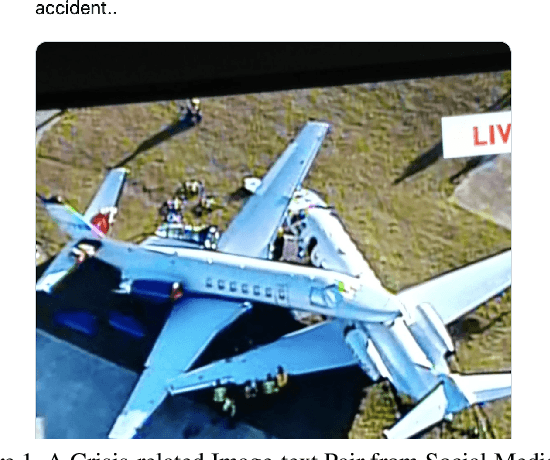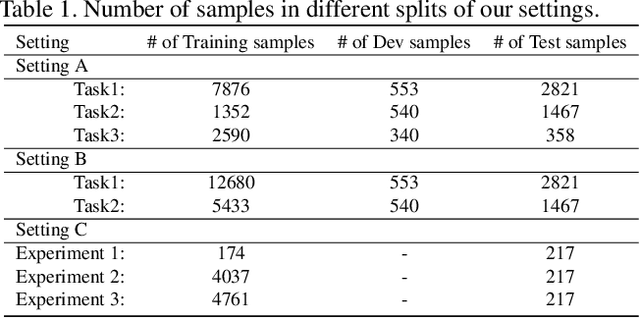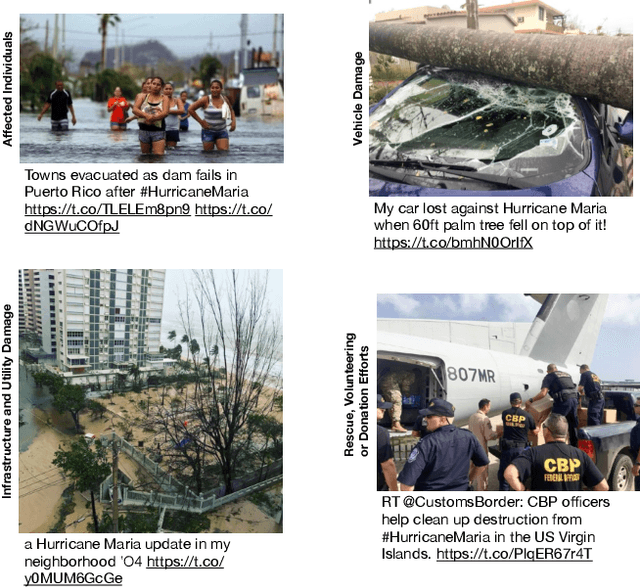Multimodal Categorization of Crisis Events in Social Media
Paper and Code
Apr 10, 2020



Recent developments in image classification and natural language processing, coupled with the rapid growth in social media usage, have enabled fundamental advances in detecting breaking events around the world in real-time. Emergency response is one such area that stands to gain from these advances. By processing billions of texts and images a minute, events can be automatically detected to enable emergency response workers to better assess rapidly evolving situations and deploy resources accordingly. To date, most event detection techniques in this area have focused on image-only or text-only approaches, limiting detection performance and impacting the quality of information delivered to crisis response teams. In this paper, we present a new multimodal fusion method that leverages both images and texts as input. In particular, we introduce a cross-attention module that can filter uninformative and misleading components from weak modalities on a sample by sample basis. In addition, we employ a multimodal graph-based approach to stochastically transition between embeddings of different multimodal pairs during training to better regularize the learning process as well as dealing with limited training data by constructing new matched pairs from different samples. We show that our method outperforms the unimodal approaches and strong multimodal baselines by a large margin on three crisis-related tasks.
 Add to Chrome
Add to Chrome Add to Firefox
Add to Firefox Add to Edge
Add to Edge